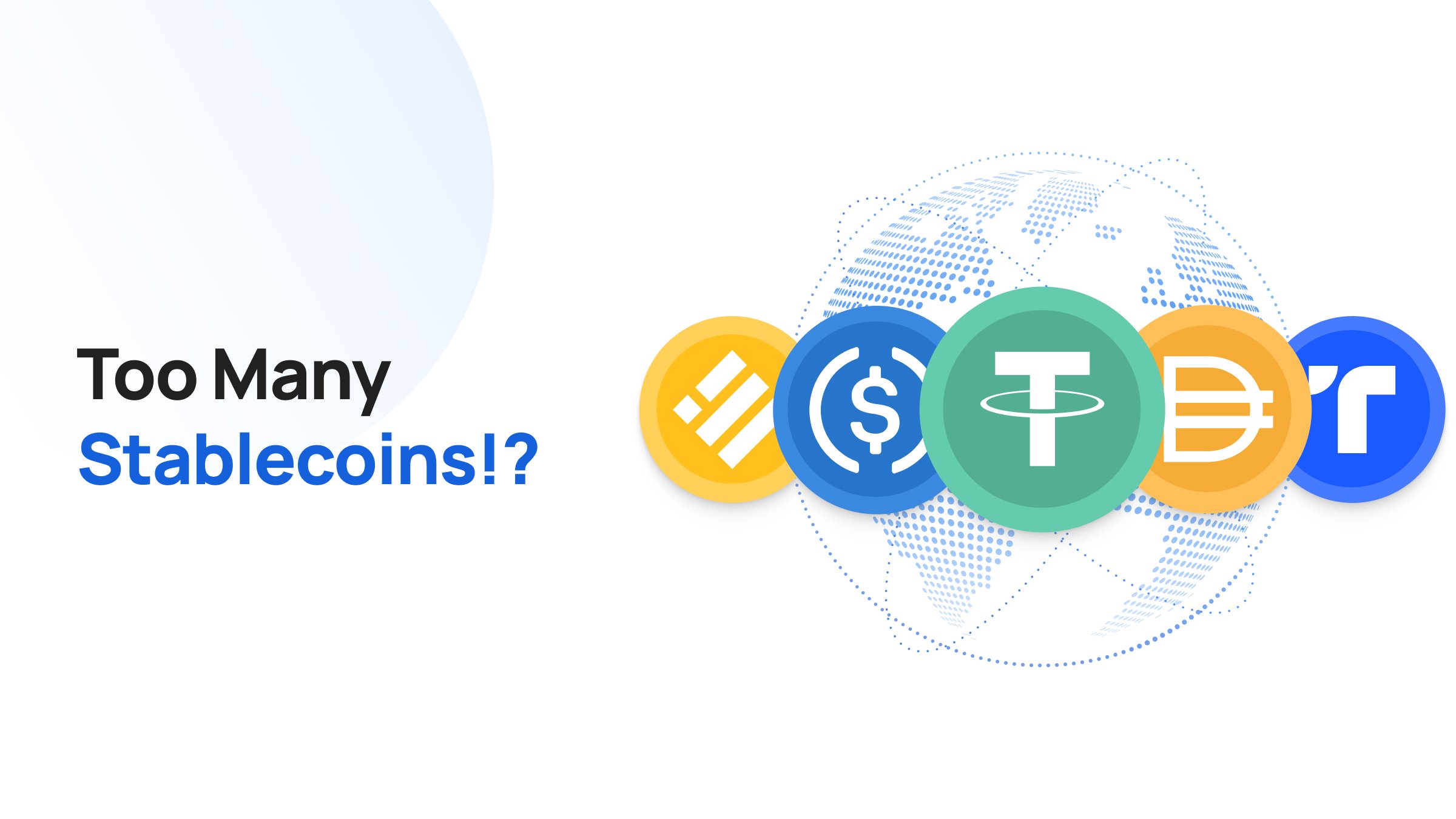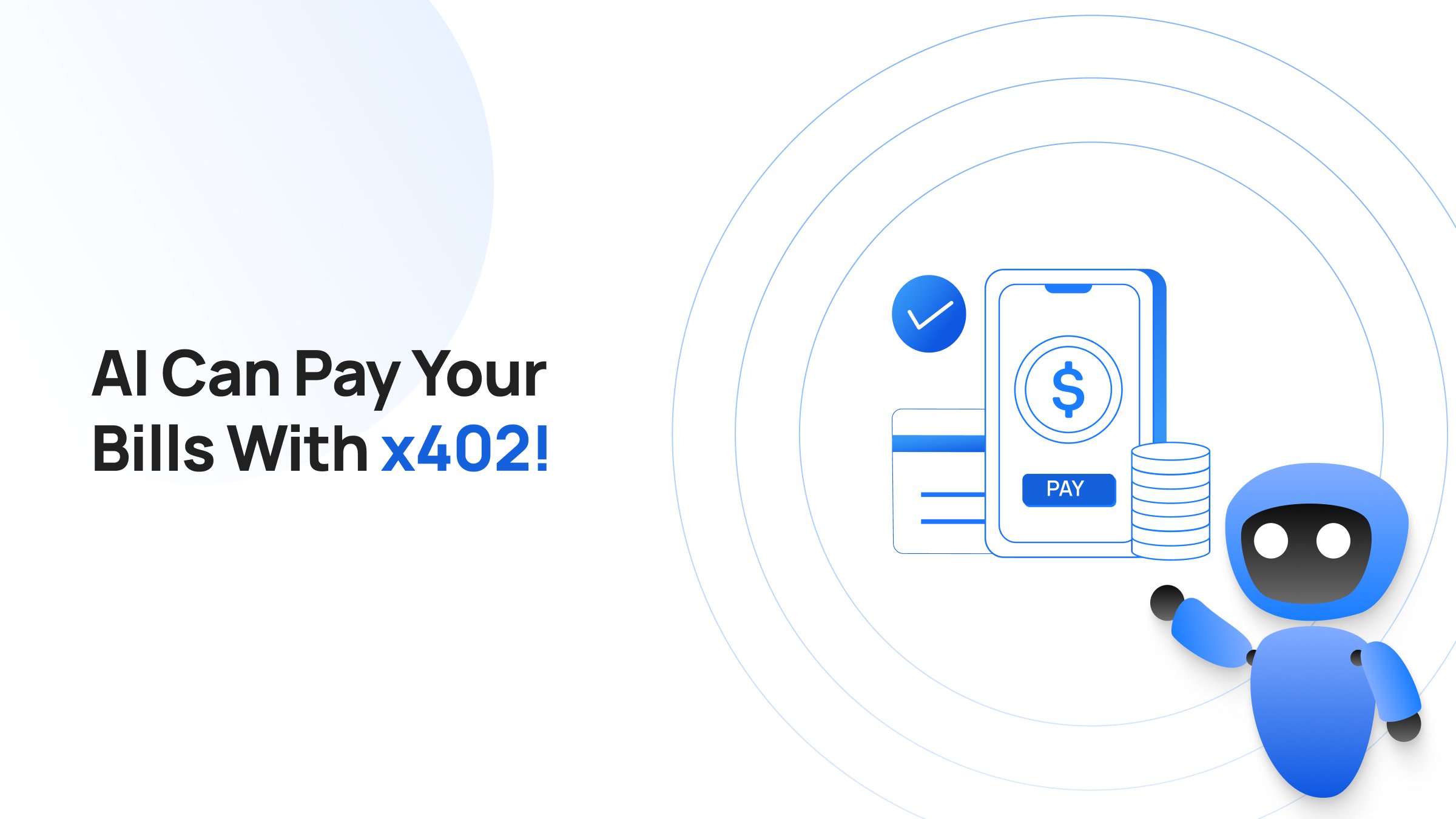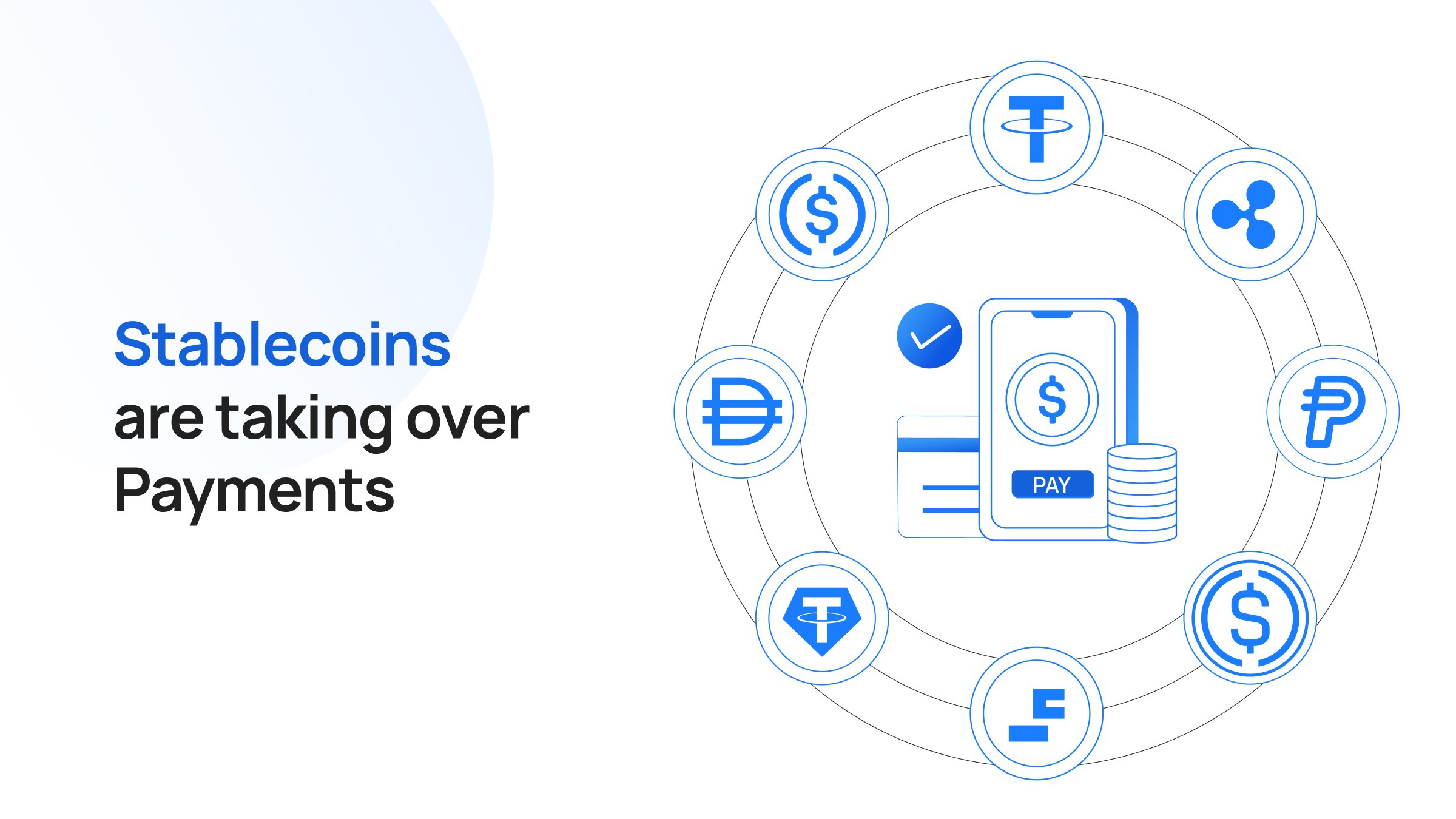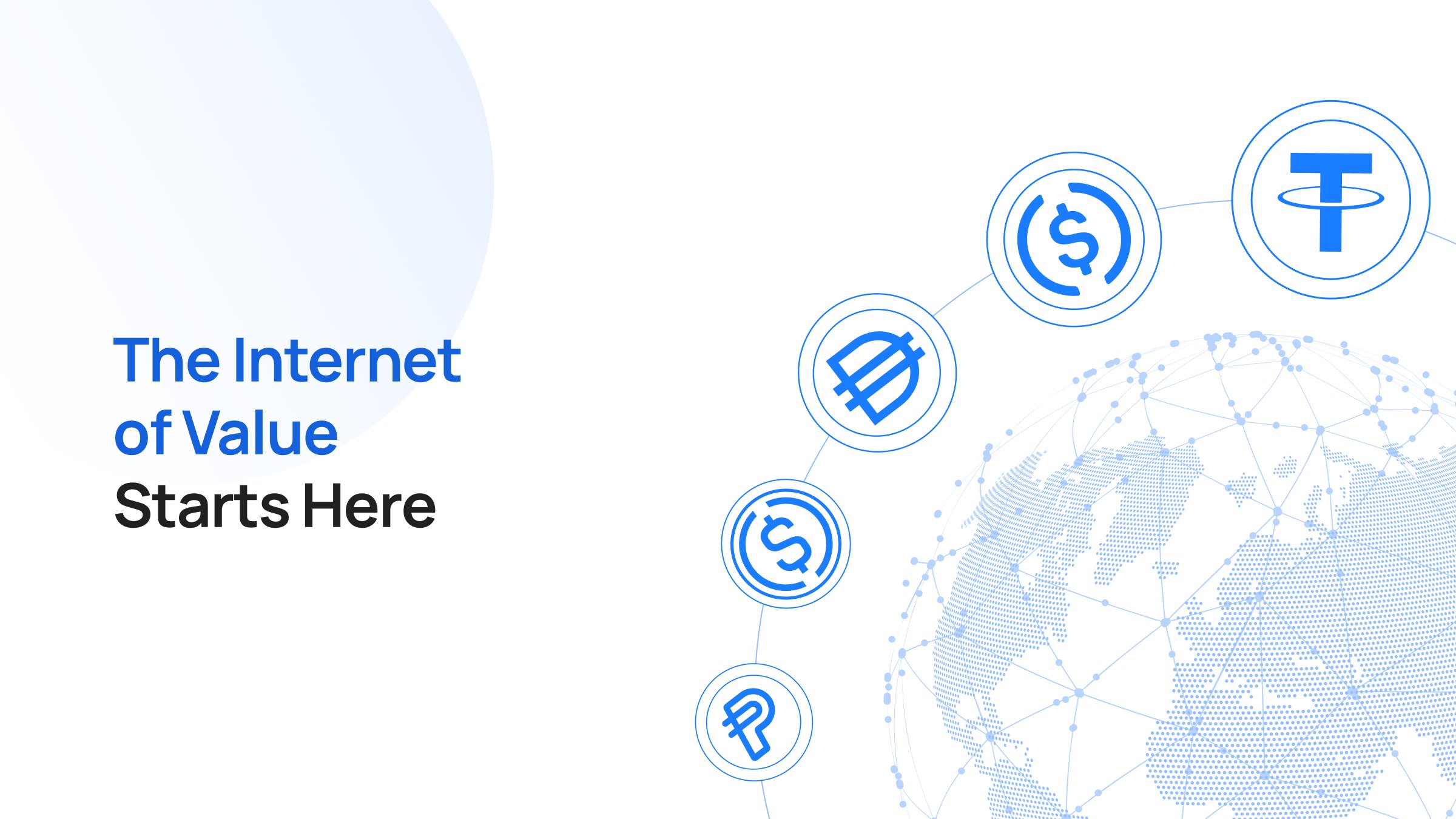Takeaways
The stablecoin market is growing and breaking apart at the same time. The capitalization is over $300 billion at the time of writing, but there were never as many stablecoins in the market as there are now - and that is a problem most didn’t see coming!
Stablecoins have become the digital backbone of crypto that powers payments, trading, and decentralized finance (DeFi) across blockchains. For users, they function as “digital dollars,” offering instant transfers, low fees, and easy movement between ecosystems. Beyond the crypto world, institutions and merchants are also embracing stablecoins for their speed, affordability, and borderless utility.
Yet, the stablecoin landscape has splintered. Each issuer, network, and jurisdiction follows its own playbook (from different reserve models to inconsistent regulatory rules). This fragmentation introduces risk, inefficiency, and complexity across the entire ecosystem.
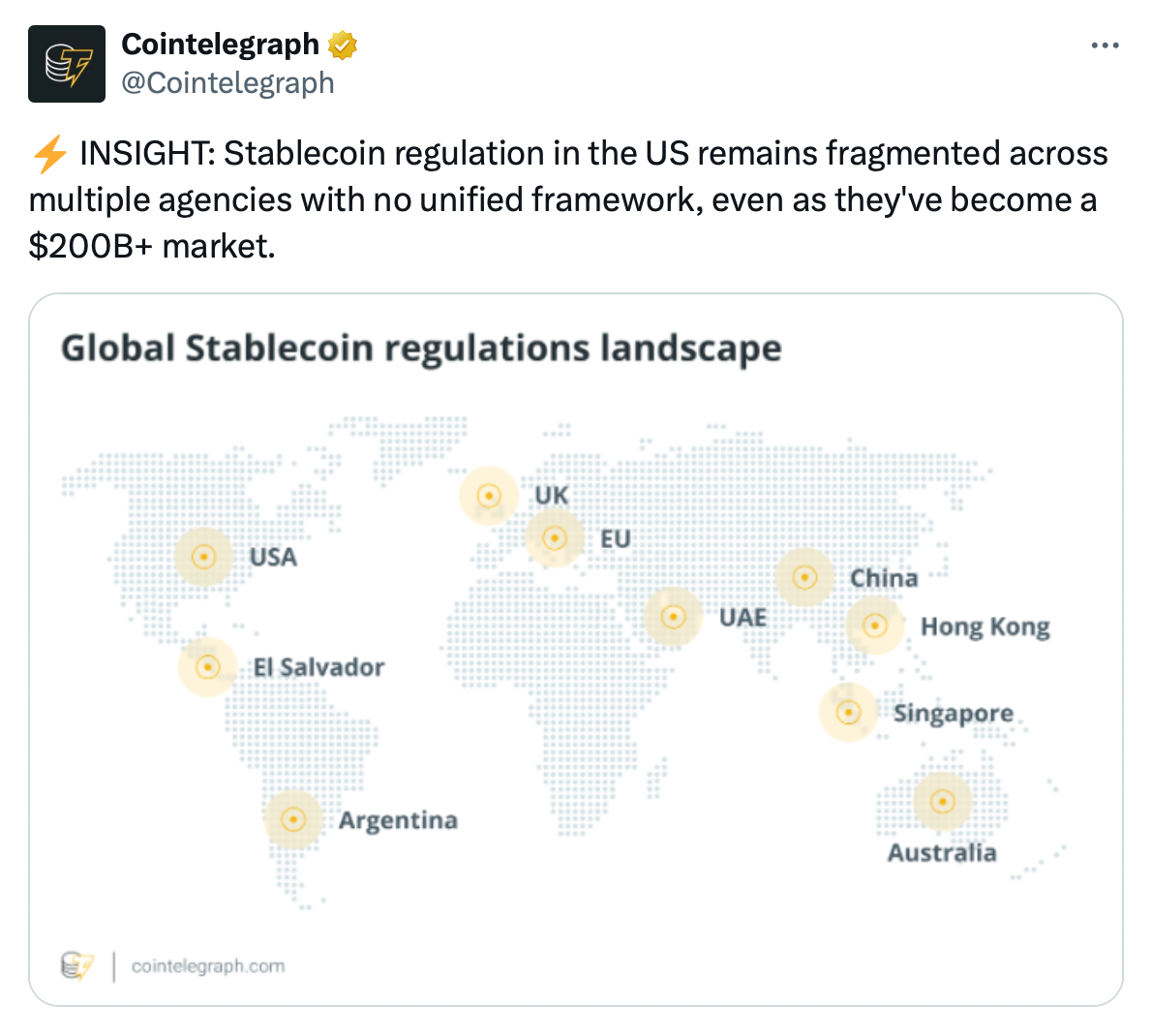
Source: Cointelegraph
As adoption grows, new players emerge, and more diverse regulations are formulated, stablecoins could lead to
- A fragmented or fragile monetary system,
- Hard-to-achieve interoperability or compliance across jurisdictions, and
- Multiple parallel markets, where ideally there could be one.
This article examines the risks associated with such fragmentations and how industry and policymakers are attempting to address them.
Key Risks of Fragmentation
Stablecoins promise stability, but fragmentation erodes that foundation by creating uneven rules, reserves, and technologies. The result is a fragile ecosystem where one weak link can ripple across the entire market.
Regulatory divergence
Stablecoin issuers face a patchwork of rules around the world. For example, the U.S. GENIUS Act and the EU’s MiCA framework differ in who can run a stablecoin and what reserves they must hold.
This regulatory fragmentation itself creates systemic risks.
Issuers are forced to choose between markets or adopt complex structures to comply with multiple regulatory regimes. In effect, an issuer may have to limit itself to one region or maintain separate subsidiaries in every region.
Divergent regulations can hinder cross-border use, facilitate arbitrage by malicious actors, and generally increase legal uncertainty for users and investors.
Interoperability failures
Interoperability is an inherent challenge blockchain assets suffer from, and stablecoins are no anomaly. Most stablecoins exist on multiple blockchains. For example, USDC exists on 17 chains, including Ethereum, Solana, and Algorand.
Moving coins across chains requires bridges or wrapped tokens. These cross-chain mechanisms have billions in balances and have proven vulnerable to hacks. Chainalysis reports that vulnerabilities in cross-chain bridges have emerged as the top security risk.
Cross-chain bridge hacks have cost $2.8 billion in lost funds, 40% of the total value of funds hacked in Web3.
In a fragmented network without standardized cross-chain protocols, users and issuers must rely on private bridges or intermediaries, which adds security and liquidity risks and undermines the promise of seamless transfers.
Reserve and Peg Maintenance Variation
Different stablecoins use different methods to maintain their peg. Some are fiat-collateralized with fully liquid assets, while others use more exotic or algorithmic backing.
For instance, Circle’s USDC maintains nearly all its reserves in cash and short-term treasuries, and publishes monthly audits. Whereas Tether’s USDT historically held a mix of cash, bonds, and commercial paper with only periodic attestations.
These differences create confidence gaps. A recent example was when Circle disclosed that $3.3 billion of USDC’s reserve was stuck at Silicon Valley Bank, and USDC briefly fell to $0.87.
By contrast, Tether’s less-transparent reserve history still underpins USDT’s value. For instance, in 2019, CFTC found that it was fully fiat-backed only ~27.6% of the time.
Such variation means that users of different stablecoins face varying risks of runs and price instability. If one coin’s backing appears weak, investors may switch to another, resulting in fragmented demand and occasional devaluations.
Run Risk and Trust Erosion
Fragmentation can trigger bank-run dynamics. If confidence in one stablecoin falters, holders may rush to redeem it, and fragmentary markets mean there may not be a unified “lender of last resort.”
The collapse of the algorithmic TerraUSD (UST) in May 2022 demonstrated how a pegged coin can spiral to zero when trust is broken, resulting in massive losses for its twin LUNA token.
In fragmented markets, such runs can spill over into other areas. A large stablecoin issuer shutting down operations could leave holders stranded without a clear fallback. Varied reserve practices and redemption rules among coins mean a crisis can quickly erode user trust in all of them, even if only one has trouble.
|
Event |
Date |
Cause |
Impact |
|
TerraUSD (UST) Collapse |
May 2022 |
The algorithmic peg mechanism broke during the sell-off Hyperinflation of LUNA |
UST fell from $1 to near $0 ~$40B in market value wiped out |
|
USDC Depeg (Silicon Valley Bank crisis) |
March 2023 |
Exposure to $3.3B reserves at failed SVB caused panic redemptions |
USDC dropped to $0.87 before recovering ~$10B market cap loss in days |
|
Tether (USDT) Reserve Scrutiny |
2019–2021 (multiple episodes) |
Regulators revealed reserves not fully fiat-backed, raising doubts |
Temporary depegs and market distrust Liquidity shifted to USDC |
|
Iron Finance Bank Run |
June 2021 |
Partially collateralized stablecoin lost confidence Mass withdrawals triggered |
IRON fell to near $0 TITAN governance token collapsed >90% in a day |
Market Inefficiencies and Liquidity Fragmentation
Each stablecoin operates its own “rail” of distribution and settlement. Without a proper on- and off-ramp solution like Transak, every issuer has to build its own off-ramp infrastructure, an expensive and inefficient process.
Merchants accepting crypto payments must often integrate separately with USDC, USDT, BUSD, and other coins, and liquidity on decentralized exchanges is split across these individual coins. This fragmentation drives up costs and creates arbitrage opportunities.
As one Reddit user put it, “Fragmentation of liquidity on stablecoins doesn’t help the user. Businesses want to do it in hopes to get free cash and earn money from interest on them. If a business uses someone else’s stablecoin, they don’t get the free cash and earn interest on it - the other issuer does.”
A patchwork of stablecoin systems can limit adoption and result in deadweight losses across the cryptocurrency economy.
Solutions To Mitigate Stablecoin Fragmentation Risks
The cracks exposed by stablecoin fragmentation aren’t unsolvable. They point to where the ecosystem needs stronger foundations. The following steps aim to stitch these scattered rails into a safer, more unified system.
Regulatory Harmonization
Policymakers are discussing common standards to avoid a race to the bottom. By coordinating (e.g., through the Financial Stability Board or G20 working groups), regulators can require all stablecoins to meet baseline safeguards, like 100% reserve backing in safe assets and third-party audits.
Such alignment would reduce fragmentation by allowing an issuer to comply in multiple markets simultaneously. In practice, a USDC-like rule set could become a de facto global minimum, making it easier for projects to scale internationally.
Interoperability Layers and Standard Protocols
Inter-chain protocols, such as Cosmos’s IBC, and bridge standards, like Circle’s CCTP, are designed to teleport stablecoins across networks natively. For example, Cosmos’s 2025 IBC Eureka upgrade enables blockchains to communicate via light clients, allowing for direct transfers of dollar tokens between Ethereum, Cosmos chains, and others without the need for custodial bridges.
Similarly, Circle’s Cross-Chain Transfer Protocol (CCTP) operates by burning USDC on one chain and minting it on another, maintaining a 1:1 supply ratio. This unifies liquidity and cuts out risky third-party bridges. Adoption of such shared protocols would enable any compliant stablecoin to move freely between chains, making the market more akin to a single network and less like siloed islands.
Transparency and Reserve Disclosure
Industry leaders are publishing detailed reserve audits and attestations. For instance, Circle openly discloses weekly snapshots of all USDC reserves and obtains monthly attestations from the Big Four, confirming that reserves exceed the number of tokens.
Regulators are also moving in this direction. For instance, the EU’s MiCA law requires monthly audits. By enforcing strict transparency standards, including full auditing and segregated user accounts, authorities can boost trust across all stablecoins.
This makes it safer for users and integrators to accept different tokens. In a harmonious system, any new stablecoin issuing across borders would have to meet these high benchmarks, reducing fear of a rogue coin.
Design Innovations
Stablecoin architects are experimenting with new models to harden pegs.
- Dual-token systems, such as Frax Finance, mint a collateral-backed coin (FRAX) and a volatile governance token (FXS) to strike a balance between stability.
- Insurance and buffer mechanisms are also emerging. MakerDAO’s DAI uses a DAI Savings Rate (DSR), funded by system fees, as a kind of rainy-day fund.
- Other proposals include decentralized insurance pools or trigger bonds that absorb shocks.
While no design is foolproof, these innovations can reduce the fragility of individual coins. For example, an algorithmic coin with a built-in insurance reserve might avoid the wholesale collapse seen in past events.
Role of International Organizations
Bodies like the BIS, IMF, and FSB are actively shaping the response.
- The Financial Stability Board issued global recommendations on stablecoins in July 2023 that call for consistent cross-border oversight of global stablecoins.
- The BIS reports emphasize the need to improve global payment infrastructures and explore central bank digital currencies (CBDCs) to underpin stablecoins.
- The IMF highlights stablecoins’ benefits but stresses the need to manage spillovers.
By promoting unified guidelines and encouraging research, these organizations help countries align their regulations and consider solutions that counteract fragmentation.
On/Off-Ramp Solutions as Integration Rails
One of the most significant barriers to scaling stablecoin use is the fragmented web of on- and off-ramps, where each issuer or platform must build its own connection to banks, payment processors, and fiat rails. This duplication wastes resources, slows adoption, and leaves merchants juggling multiple integrations.
Platforms like Transak address this by acting as a unified integration layer, giving businesses and dApps instant access to dozens of payment methods and stablecoins through a single connection. By handling compliance, local payment support, and fiat conversions in the background, Transak reduces the friction of fragmented rails, making it easier for stablecoins to operate like actual global money.
Towards a Digital-First Financial Future
The stablecoin industry is at a turning point. As global regulators, developers, and infrastructure providers align efforts, a more unified and resilient digital monetary system is emerging.
Interoperability projects, such as Axelar and Layer-2 bridges, combined with global policy harmonization, will play a central role in shaping the next generation of programmable money.
Until then, users and institutions continue to gravitate toward transparent, well-audited, and compliant stablecoins, which are the foundation for a truly global digital economy.
Also Read: How Stablecoins Fit Into the Modern Treasury Stack

